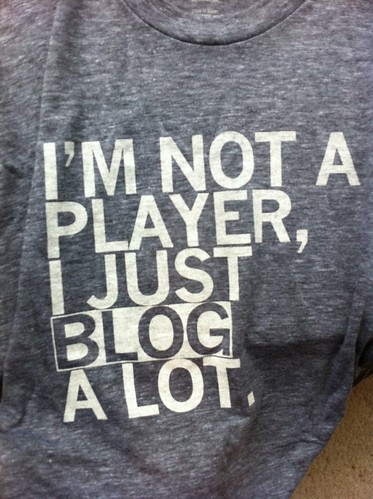By Guest Writer Jessica Colburn
I have had a serious long-term romantic relationship, and even though we are not a married couple, we still have had our fair share of communication problems throughout our relationship. Sometimes it is easier to simply give up, because it feels like your words are not heard.
Boyle, Parr and Tejada emphasize the importance of couples communicating effectively and clearly. To them communication counseling is the key to success in committed relationships. According to the article, couples need to focus on the clarity of the message.
To do this, the couples counselor helps them distinguish between the speaker and listener roles and educates them how to communicate efficiently and clearly especially when emotions are involved. In the I Said, You Said exercise, non-verbal cues are eliminated and the couples attention focuses on the verbal messages the partner is sending. Though non-verbal cues are very prominent in communication, they are often easily misunderstood and the actual message is not taken seriously or correctly.
I Said, You Said
Communication Exercise for Couples:
Step 1: The therapist leads the couples through the exercise by assigning one individual the speaker role and the other the listener role. The couples sit back-to-back, so they can practice focusing on the verbal messages being sent rather than being sidetracked by the non-verbal cues. Next, the speaker gives instructions to draw a picture on the clipboards, which they both do. The speaker and listener can then focus on playing one role at a time and trying to send a clear message. After the couples have completed the exercise
they return face-to-face and discuss their experiences with the therapist.
Step 2: This exercise involves the same techniques, except the therapist wants the couples to progress towards an emotional level. Now, one partner shares a fun memory or experience from their relationship and then the listener repeats exactly what the speaker
just expressed. They exchange roles and follow the same process, ending with questions that reflect their positive emotions.
Step 3: The therapist instructs the couples to follow the same pattern as before, sitting back-to-back. However, this time the speaker shares a sad memory. Now, the couples have a discussion about the differences of the two emotions, as well as distinguish between sharing sadness and not anger. This shows that emotions can play a big role when
trying to communicate effectively.
Step 4: Now the partners advance to the stage where they have a conversation about opposing views. However, the partners cannot address anything that has recently resulted in anger or previously discussed that has created an intense debate. The speaker is
instructed to state their position and then the listener repeats what they heard the speaker say. This gives individuals the opportunity to state their opinion about the topic without having to defend their position.
Step 5 or Quid Pro Quo: In the last step of the exercise the therapist introduces the value of quid pro quo. By using this technique the partners are asked to try to make a small change in their previous statements. Next, the speaker tries out their new revised stance on the issue and the listener repeats what is said. They then switch roles and the therapist becomes more involved in the conversation as the couples become more comfortable communicating about these strong issues. The therapist can help the couples communicate more effectively and clearly by having the couples focus on their tone,
word choice, and volume, which can ultimately hinder or help the message.
In all, couples should know that they can learn from these exercises. Communication is one of the most important aspects of committed relationships, but also includes an on-going work in progress. Nonetheless, if taken seriously, couples can improve their
communication skills by focusing on effectively and clearly stating the message. Also, this can help teach couples the dominance of non-verbal messages over verbal messages. Emotions can sometimes affect the spoken message; however after a couple learns to speak with clarity the emotional aspect can be addressed without changing the
content of the message. Overall, this exercise should be used during earlier stages of a relationship, if communication problems should arise. Even though it is optional to have a therapist present, it is highly recommended for guidance and suggestions during the activity.
Parr, P., Boyle, R., & Tejada, L. (2008). I Said, You Said: A communication exercise for couples. Contemporary Family Therapy: An International Journal, 30(3), 167-173.



 By Guest Author Heather Martin
By Guest Author Heather Martin Millions of people blog. Some blog just to vent and others do it to manage their distress (an emotional release). What many might not know is that blogging, for the majority of users, is therapeutic, socially supportive.
Millions of people blog. Some blog just to vent and others do it to manage their distress (an emotional release). What many might not know is that blogging, for the majority of users, is therapeutic, socially supportive. An anonymous contribution:
An anonymous contribution: In the workforce, communication is absolutely essential to guarantee a successful business. Over the past couple of decades, there have been hundreds of technological breakthroughs that have made communication over long distances a buttons-push away. Information and communication technologies (ICT’s) have continued to improve the quality, accuracy and ease with which people can communicate over physical distances. However, what has seemed to be only helpful to the workforce has turned into a dilemma, as ICT’s can not only bring people together with little difficulty, but they can also block people out with the same ease.
In the workforce, communication is absolutely essential to guarantee a successful business. Over the past couple of decades, there have been hundreds of technological breakthroughs that have made communication over long distances a buttons-push away. Information and communication technologies (ICT’s) have continued to improve the quality, accuracy and ease with which people can communicate over physical distances. However, what has seemed to be only helpful to the workforce has turned into a dilemma, as ICT’s can not only bring people together with little difficulty, but they can also block people out with the same ease.